Pole Rigs Explained
Time and trouble
Pole rigs are fiddly and a pain to make up, but all the effort is rewarded when pre-prepared ones save so much time on the bank and result in catching lots of fish. Although it’s possible to buy off the shelf versions, which are made to a very high standard these days, it’s difficult to beat your own unique creations. Using shop bought rigs is okay as a starting point, but being able to encompass favourite floats with personal preferences regarding line, hooks, and weights is even better. Various tackles can be specifically designed to suit the type of venues and species of fish you want to target. Having plenty of variations in float sizes, shotting patterns and line diameters is also beneficial, rather than making do with minimal choices that struggle to keep up. A good collection of back up pole rigs makes a difference, improving versatility and results.
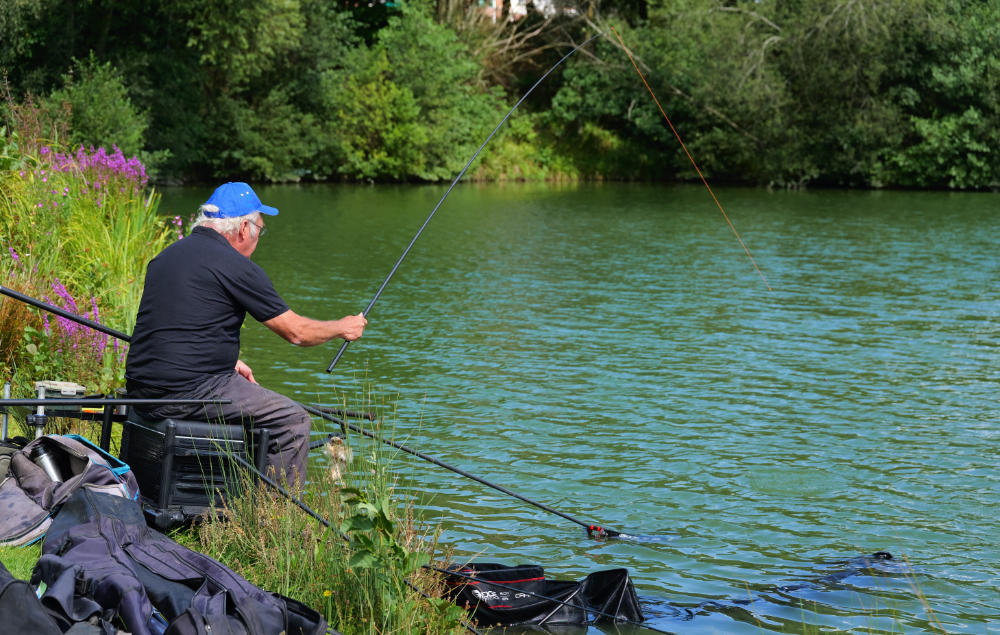
Micro shot
Micro shot from size 8s to tiny 13s are still widely used by many pole anglers. 13s are a bit extreme, but can be handy for fine-tuning floats so their tips dot down perfectly. Complete rigs can be created with micros, using larger sizes like 8s, 9s or 10s to form strung bulks, along with smaller 11s or 12s as spread-out droppers below. Small shot like these can also be used with olivette bulk weights, helping to lock them on the main line, also spread out down to the hook. The main downside with round shot is its severe nature, which can damage fine diameter line if it’s not applied carefully. Match anglers often prefer the less forgiving nature of shot, which makes it less likely to move out of place when bagging lots of fish. But it’s a lot more fiddly to apply to rigs, compared with alternatives like Stotz, Cube or Styl weights.
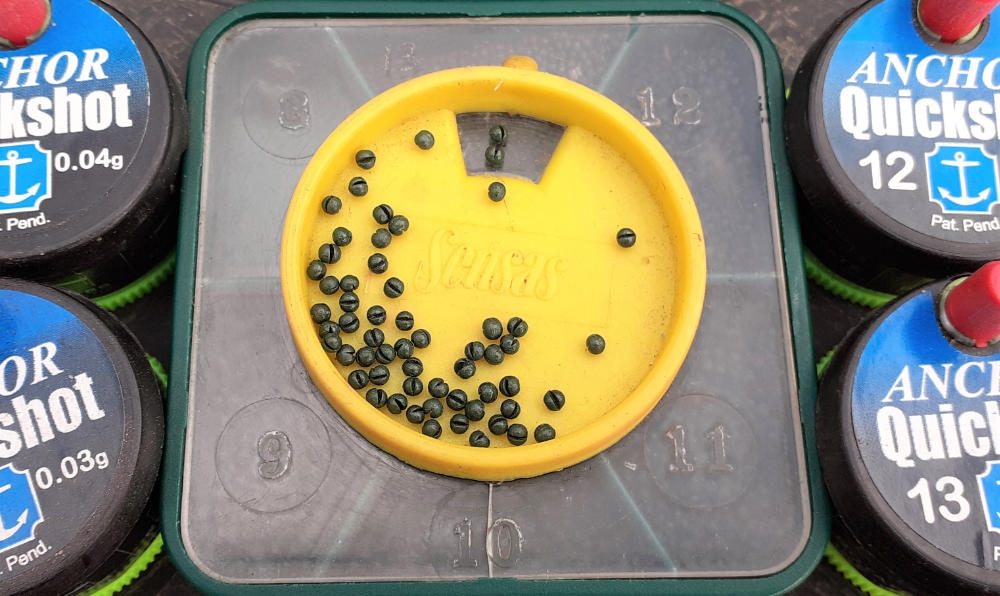
Mini cubes
These hybrid weights are a cut down version of elongated continental shot called Styls, which used to be widely incorporated in pole rigs. But they were ungainly and tangle prone, resulting in shorter Stotz or Cube weights becoming popular. These emulate micro shot more closely, while being much easier and faster to apply. They are also kinder on fine diameter lines, but need to be clamped on firmly to try to avoid slippage. I still use old Styl Pincers to do this job, finding them easier to work with than more modern tools. After tipping small cube shot onto a flat surface, those with their slots facing down can be picked up with pincers and quickly nipped onto rigs. As with micro shot, larger 8s, 9s and 10s can be used to form spread bulks on lighter capacity floats, spacing out number 11s, 12s or 13s below. There are numerous options.
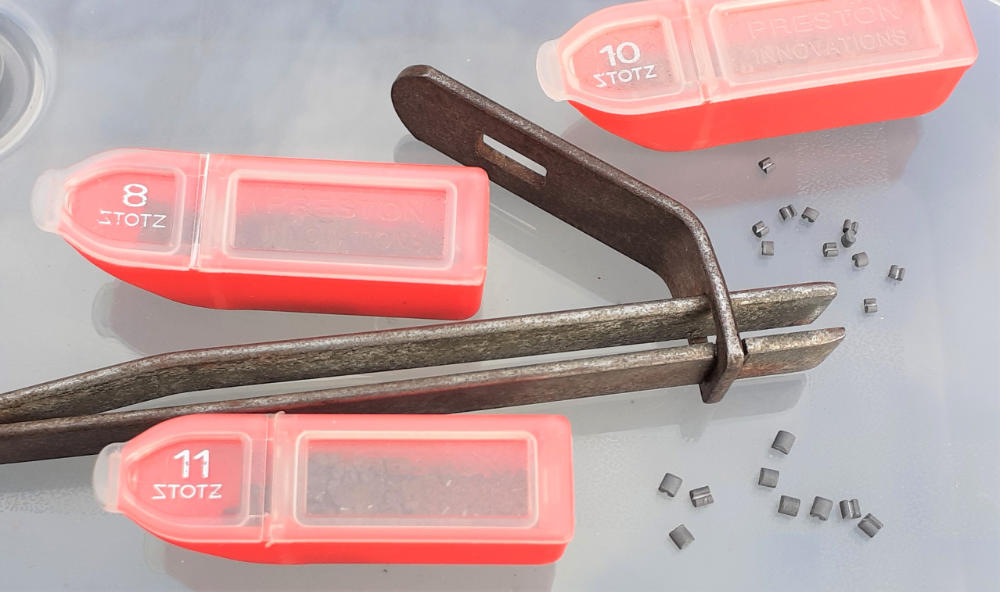
Olivettes
A basic and effective way of setting up pole rigs is to use olivettes. These bulk weights are mainly made from brass these days, although I still have quite a few tungsten versions, which are higher density and more compact. Olivettes make rigs very positive, helping to get the hook bait down faster in deep water, avoiding nuisance small fish in the upper levels. These bulk weights come into their own with bigger capacity floats from a gram upwards, keeping rigs simple and less tangle prone. They are particularly good for fishing to-hand with longer whips. Olivette set-ups can have short hook lengths for speed purposes, putting a greater distance between the bulk weight and hook when more finesse is required. In the latter instance, several spread out dropper shot underneath creates a slower fall as the tackle nears full depth.
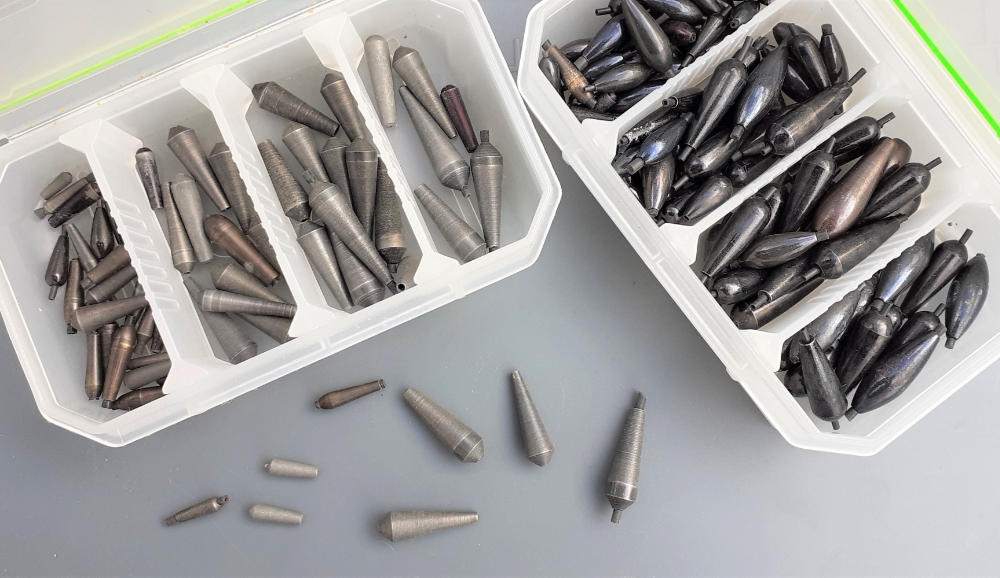
Route one
Using positive bulk weights on pole rigs is good for speed purposes, along with handling deeper or flowing water situations, also for swinging tackle out to-hand style. In-line olivettes can be anchored on the line in various ways: wedged with a short bristle, or locked in place using micro shot. There are also peg leg olivettes that anchor neatly with two short pieces of silicone tubing. In this instance, the float has been carefully matched with its bulk, so only a couple of small dropper shot are required to dot its fine tip down. This keeps rigs as simple and trouble free as possible, which is particularly important for busy sessions, whether targeting big weights of small or big fish. It’s critical to lock olivettes securely, but also to be able to move them. Repositioning the bulk weight up the rig can improve presentation, producing more bites.
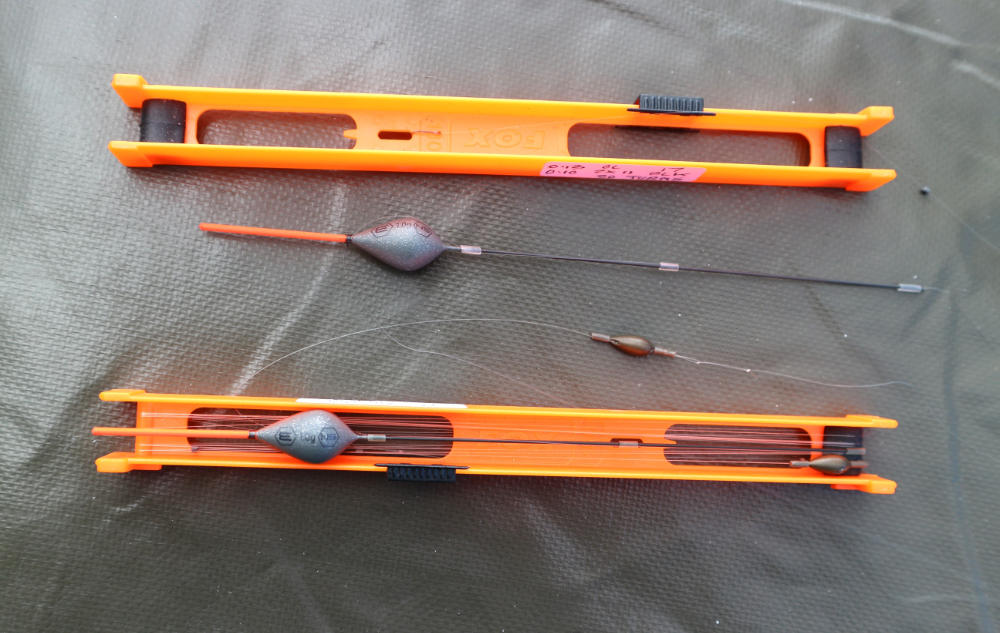
Route two
Strung bulks of micro shot or cube shaped weights are time-consuming to construct, but worth the effort in the way they provide an alternative to olivette set-ups. By spreading the load, a float is capable of carrying, subtle differences in presentation can be explored. Holding strung rigs on a tight line as they settle often pulls bonus interest because the hook bait descends more slowly. Also, a string of shot will pick up any undertow better, moving the tackle differently to a basic bulk weight, which tends to keep everything dead still. You can play extra games with shot only formats, spreading them out even more, or carefully tapering down towards the hook. Strung rigs, made using round micro shot or cube weights, suit lighter floats up to around one gram in capacity. They are extremely versatile, capable of finding fish at all depths.
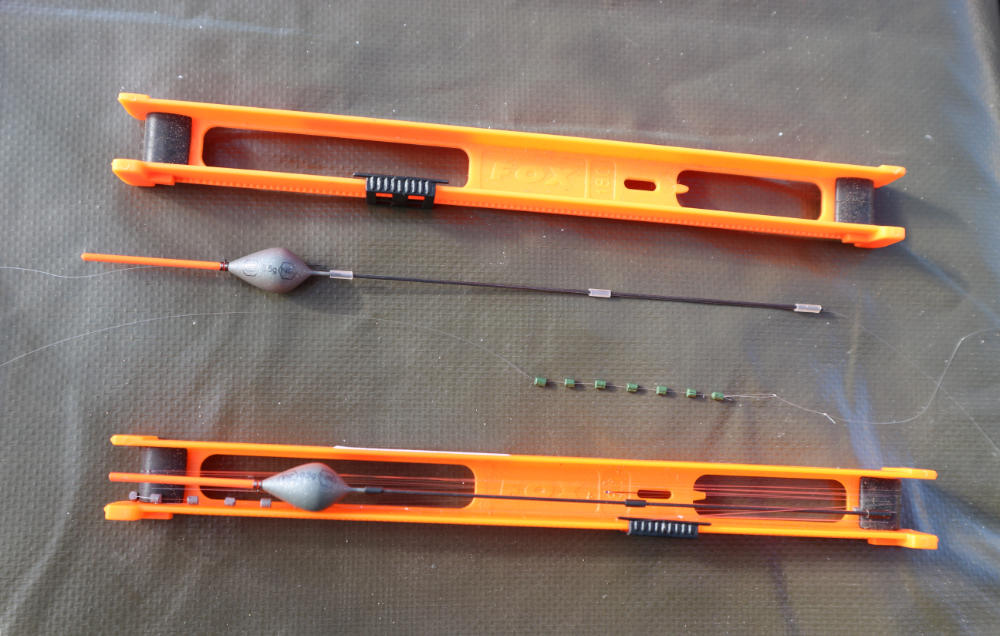
Custom made
As mentioned previously, off-the-shelf pole rigs can be purchased to a very high standard and are a good way to help understand the basics of this type of tackle. They are particularly handy for beginners, where pole fishing is the easiest way to get started. But when more experience has been gained, making your own rigs allows unique formats to be achieved, better suiting the types of venues being fished and what is being targeted. Being able to use lines, hooks, and weights you are familiar with helps a lot here, knowing what each component is capable of. As a good example, I like to use Edge Premium Mono for my rigs because it’s highly accurate with diameters and breaking strains. This provides lots of confidence in matching tackle correctly with the right grade of pole elastic, rather than just hoping everything is properly balanced.
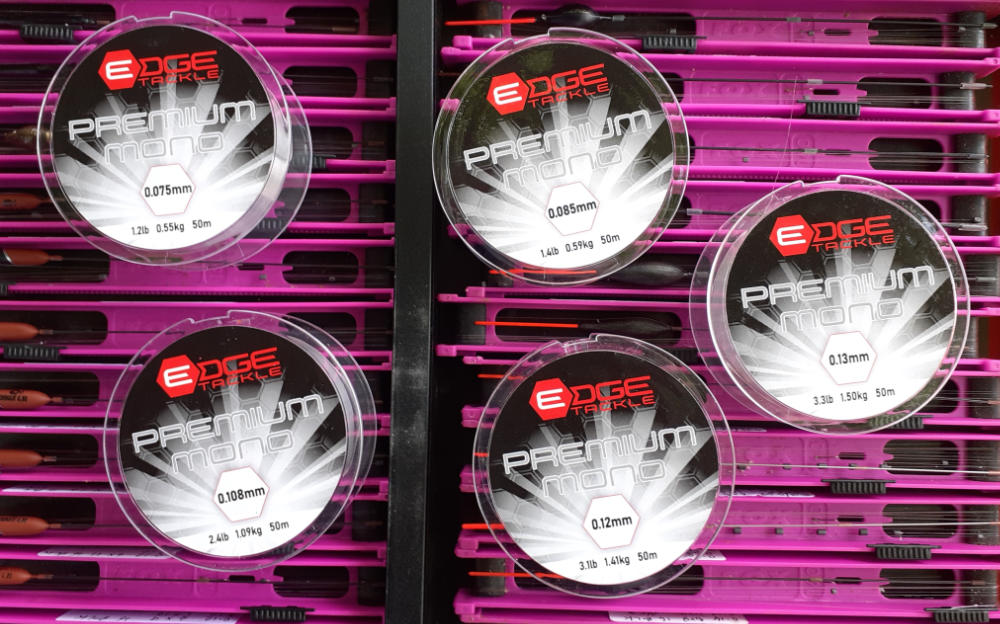
Going shallow
Many venues are on the shallow side, suiting smaller capacity pole floats. Good Edge designs for this type of fishing are Edge C2s for pellet usage and Edge N5s for natural baits like maggots or casters. C2s have 1.75mm tips, buoyant enough to carry heavier pellets and other larger offerings, while N5s are more sensitive with 1.25mm tips for lighter applications. Whether fishing commercial or natural venues, which the C and N ranges amply cover, for anything under a gram in capacity I simply use cube shaped micro weights. Normally, this entails a strung bulk of number 8s, 9s or 10s, with two or three number 11 or 12 droppers spread out below. All these weights can be moved around, especially the bigger ones, which might be spread out even more for a slower fall of the tackle, or grouped more tightly to get everything down considerably quicker.
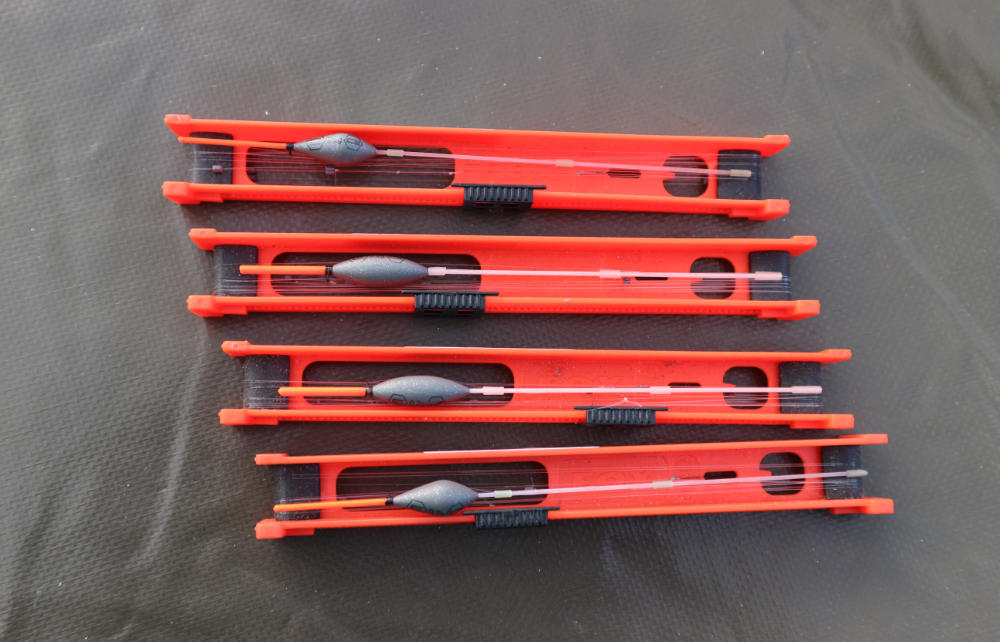
Hook choice
One of my favourite all-round hook patterns for general pole fishing is a spade end with a round bend shape. This has a standard shank length and is made from a light-to-medium wire gauge, finished in black nickel. Apart from the Sensas 3405 model, VMC and Hyabusa produce similar products in barbed and barbless versions. I rarely use barbs anyway, flattening them down with shot pincers. This type of hook suits baits like maggots, casters, hemp, pinkies, and segments of worm, but can be used with soft pellets for species like skimmers, being strong enough to deal with any carp that muscle in. I use other patterns, but the main objective is having shapes, sizes, finishes, and strengths I trust. Black nickel is hard wearing, as is a Teflon coating, both of which rarely go blunt. Spade ends present better than eyed versions when using lighter tackle.
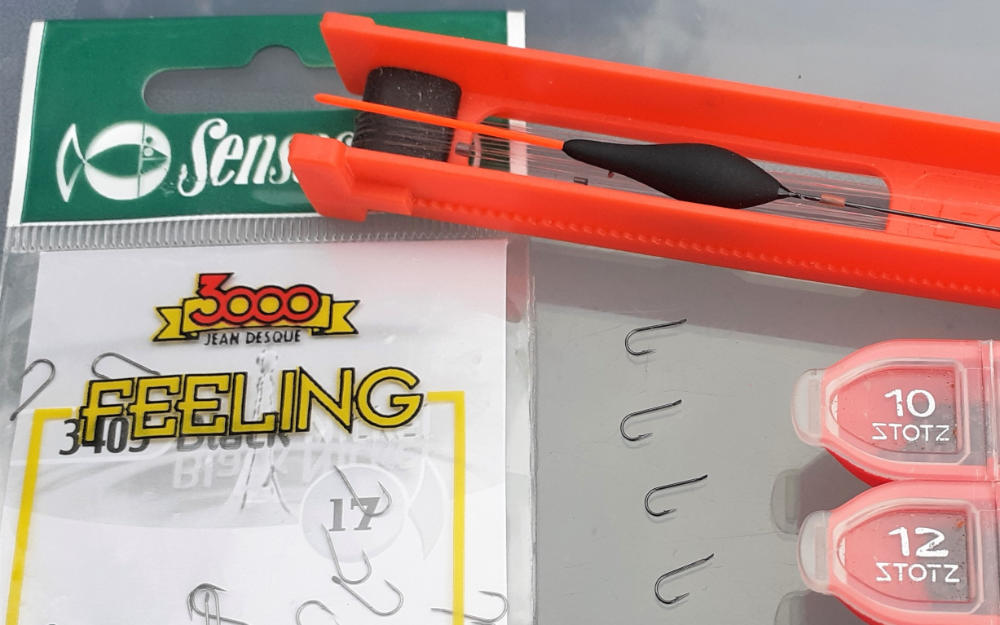
Stem materials
Most of my pole floats are a mixture of wire and carbon stem models, along with some fibreglass choices. Wire is good when you want the rig to cock quickly, without having to work the float upright. Carbon is better when using bulk weights, following them in a smother fashion when swinging rigs out. Fibreglass is extra durable and particularly good for smaller bagging up style floats, whether targeting silvers or carp. Wire stems come into their own when you need stability, holding tackle on a tight line, where you don’t want the float leaning over. Carbon works better when more distance is required between the pole tip and float, such as for fishing to-hand style, or in running water applications. Thin carbon works well in flowing situations because it doesn’t ride up, while thicker carbon stems help to set the tackle upright faster.
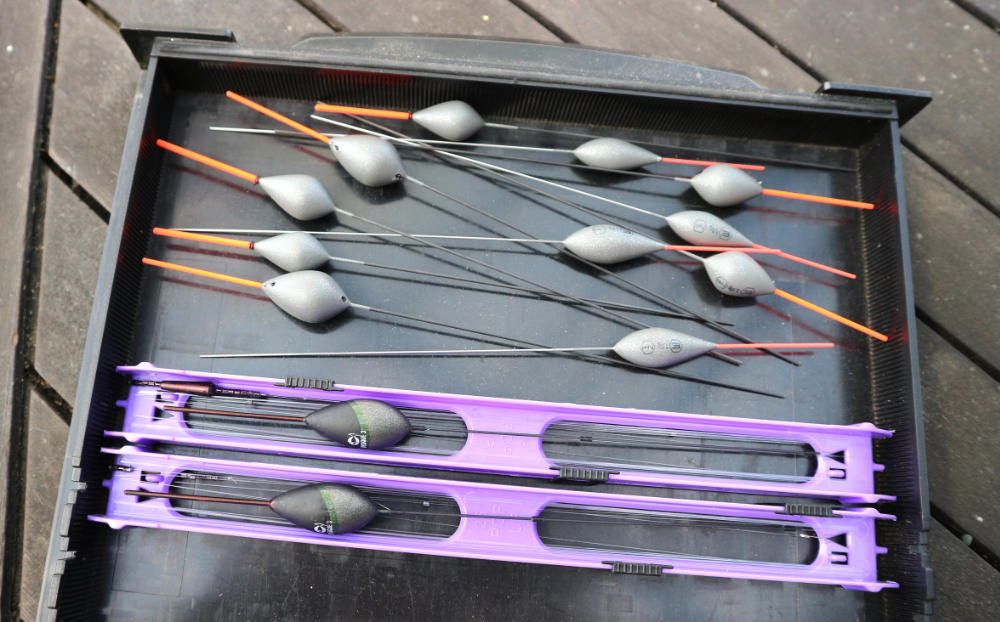
Labelling up
I place small self-sticking labels on the side of my pole winders to note any important information. I used to print details with a felt tip pen, but it was messy and time-consuming to erase if anything was changed. The most important info to note is main line and hook length diameters, along with hook patterns and sizes. I’ve also got in the habit of recording shot gauges and numbers, which is useful if anything gets lost. I finish off by noting the number of turns of line on each rig, to tie in with top 3, 4 or 5 kits, along with various whip formats. With hook patterns, some codes can get confusing, so I devise my own nicknames for favourite types. In my terminology, BLK refers to black nickel, while with various pellet hooks, I abbreviate to PEL and any extra relevant details. TEF means hooks are Teflon coated. And so it goes on.
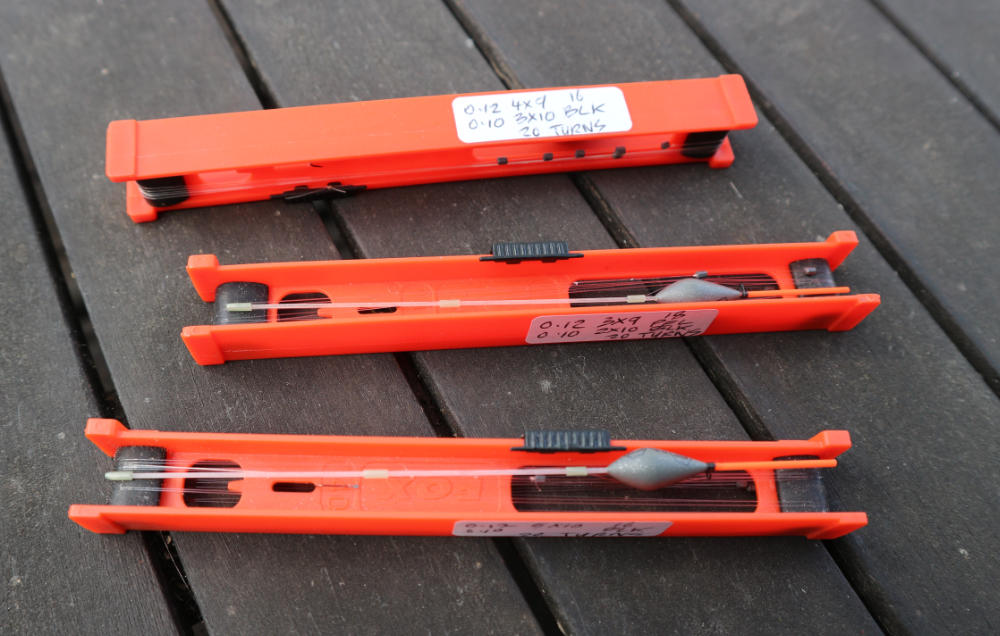
Rewarding times
Special catches like this make all the hard work of making up pole rigs worth the effort. During busy sessions, a fragile rig can easily get trashed, so having reserve options gets you back hauling in double quick time. Similarly, if conditions change, having alternative readymade tackles in reserve can pull things back your way. Small details, like pole float shapes and having a good selection of choices, can make a huge difference between doing well or struggling. Streamlined pole floats work best for catching shallow and fast. Body-up shapes perform well in flow or drift; body-down models are better in stillwaters. It’s simple really. Stepping up, pole float sizes and the weight capacities they carry to deal with deeper water, or faster flow rates. It’s more satisfying catching with pole tackle carefully made and designed by yourself.
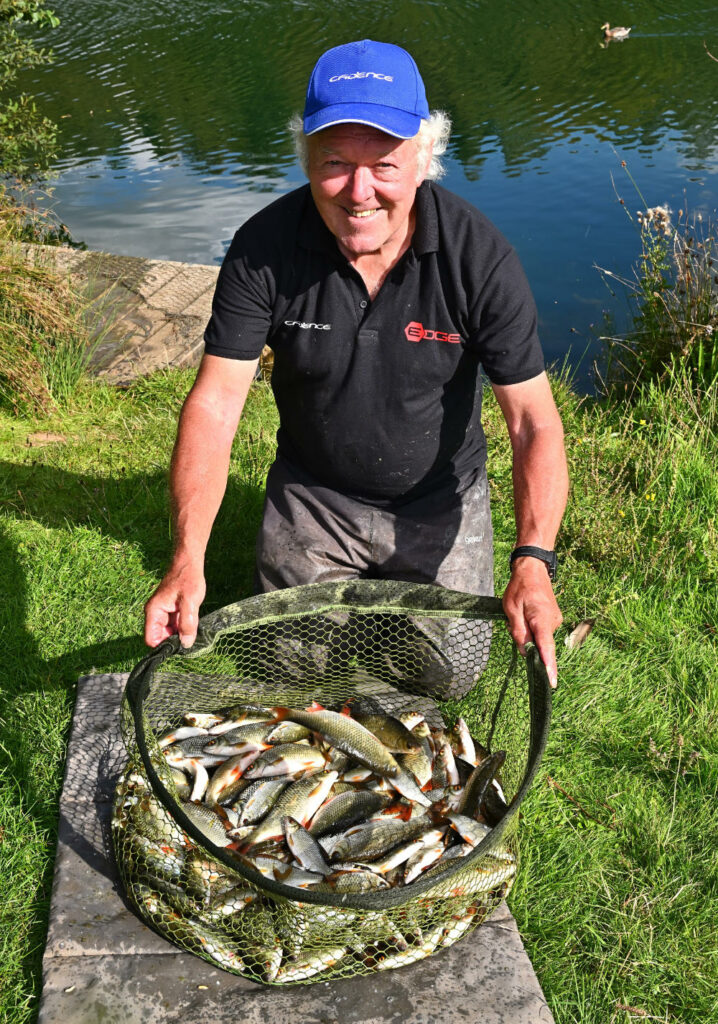

Hi Dave
Yet another excellent article like all the rest packed with info. Need to use this info on my local Grantham canal weed permitting as you well know. Learnt a bit from Chris Toon also.